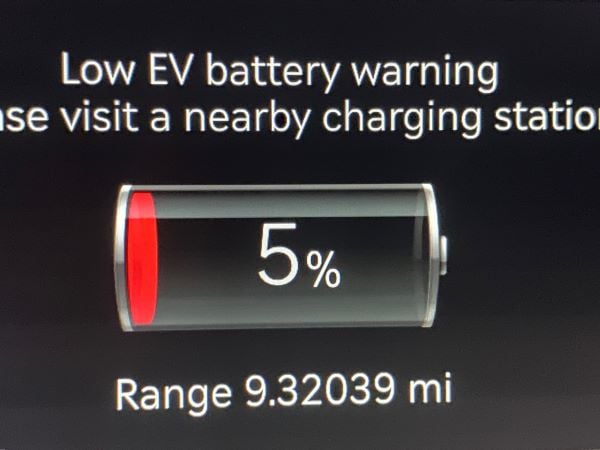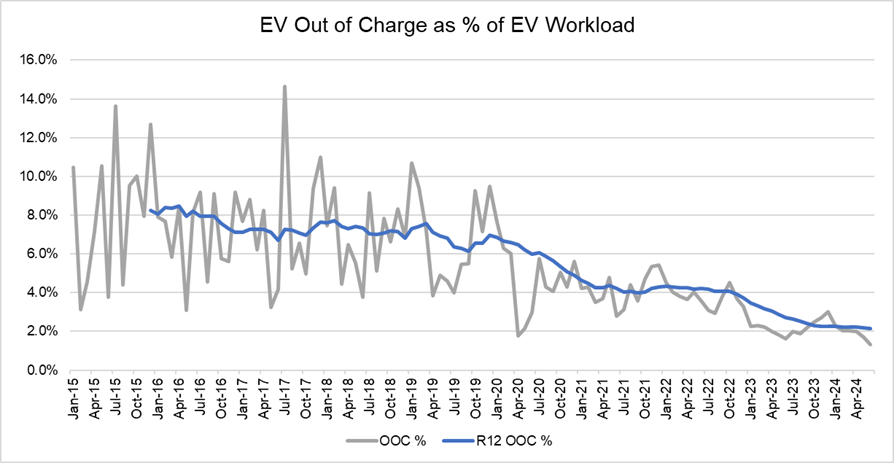16 July 2024
The proportion of electric vehicles in the UK running out of charge in June dropped to the lowest ever, according to new AA statistical analysis.
These latest figures were revealed by the AA president at the EV Summit in Oxford.
The figures show out of charge breakdowns on EVs, which are calculated as a percentage of all EV breakdowns, are at a record low in June of 1.4%. The rolling 12 month figure of 2.2% is also a record low.
That was the lowest monthly figure on record and is down from 1.6% in June last year, 2.8% in June 2021 and 4.6% in June 2019.

The UK trajectory for AA EV breakdowns remains very similar to the AA’s equivalent, NAF in Norway, which has the highest penetration of EVs in Europe. New battery technology, better range, charging performance and reliability, charge post support and better driver and dealer knowledge have all improved. The AA deals with approximately 8,000 breakdowns each day across all vehicle categories but only deals with 5 or 6 out of charge vehicles per day. Often the vehicles are not actually ‘out of charge’ but are low on charge but the driver is worried about getting to the next charger.

Historical data
The number of ‘out of charge’ EV breakdowns was running at 8% of all EV breakdowns in 2015 but this dropped to 4% of breakdowns in 2021/22.
In the 12 months from October 22-Oct 23 the average figure for vehicles out of charge was 2.3% On those 2.3% approx. 50% were not out of charge but low on charge and the drivers worried they won’t find a charger.
In June we saw just 1.4% out of charge.
Ultimately we expect the figures to drop to 1% (same as running out of petrol/diesel).
Edmund King, AA president, said: “We have just been on a 1,500-mile EV Rally across England, Scotland and Wales without any range anxiety. The Rally three years ago was different and more stressful as chargers were less frequent and less reliable.
“The AA has the biggest database of breakdowns in the UK and our figures clearly show that year on year the proportion of EVs running out of charge has dropped dramatically.
“In fact, in the last eight years the proportion of EVs running out of charge has dropped by about 80% which is due to an increase in the number of chargers and their reliability, better charge post support for customers, improved range on newer EVs and better driver education and information.
“We understand why many drivers have been hesitant about switching to EVs as it is a massive change, but it is important that their decisions are based on accurate information. Once drivers have made the switch the vast majority will not look back.”
The AA has also found the top 30% of breakdown faults for EVs are almost identical to petrol and diesel cars which tend to be tyres, wheels and the 12V battery.
